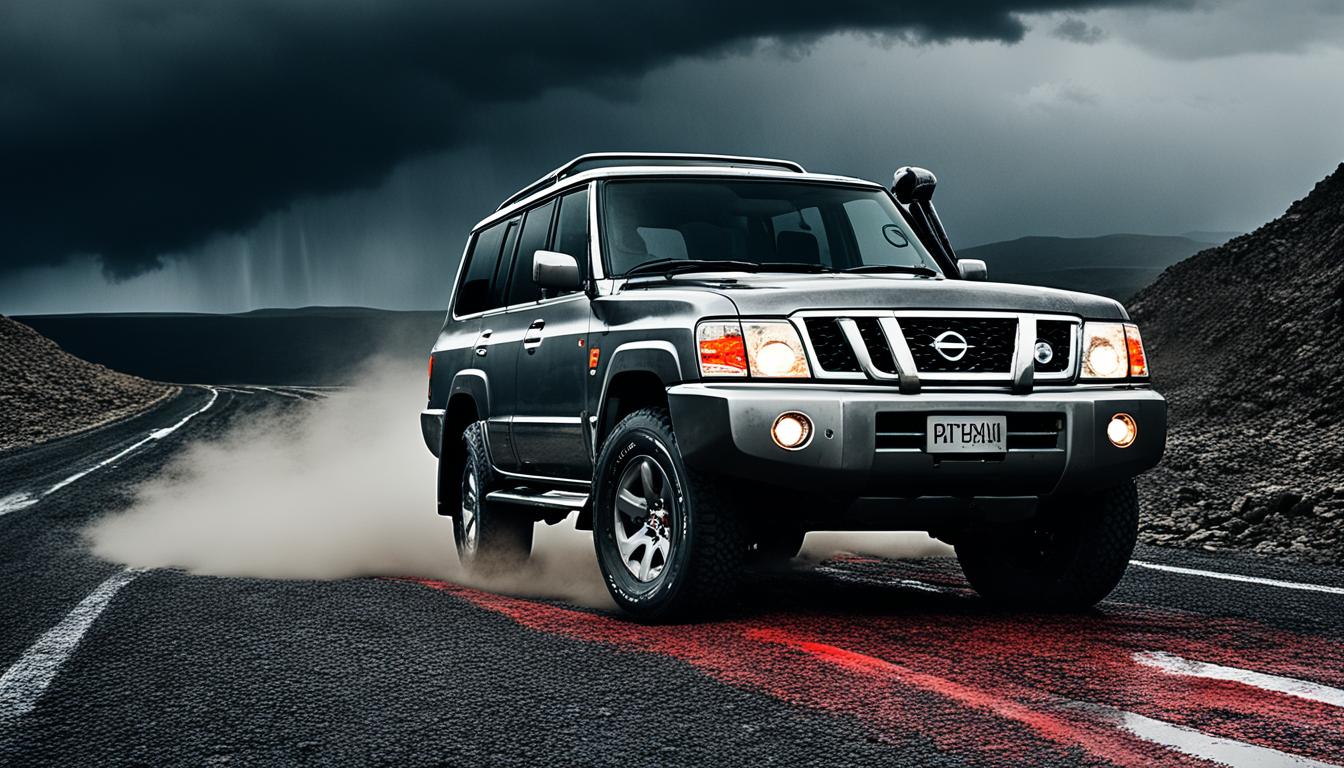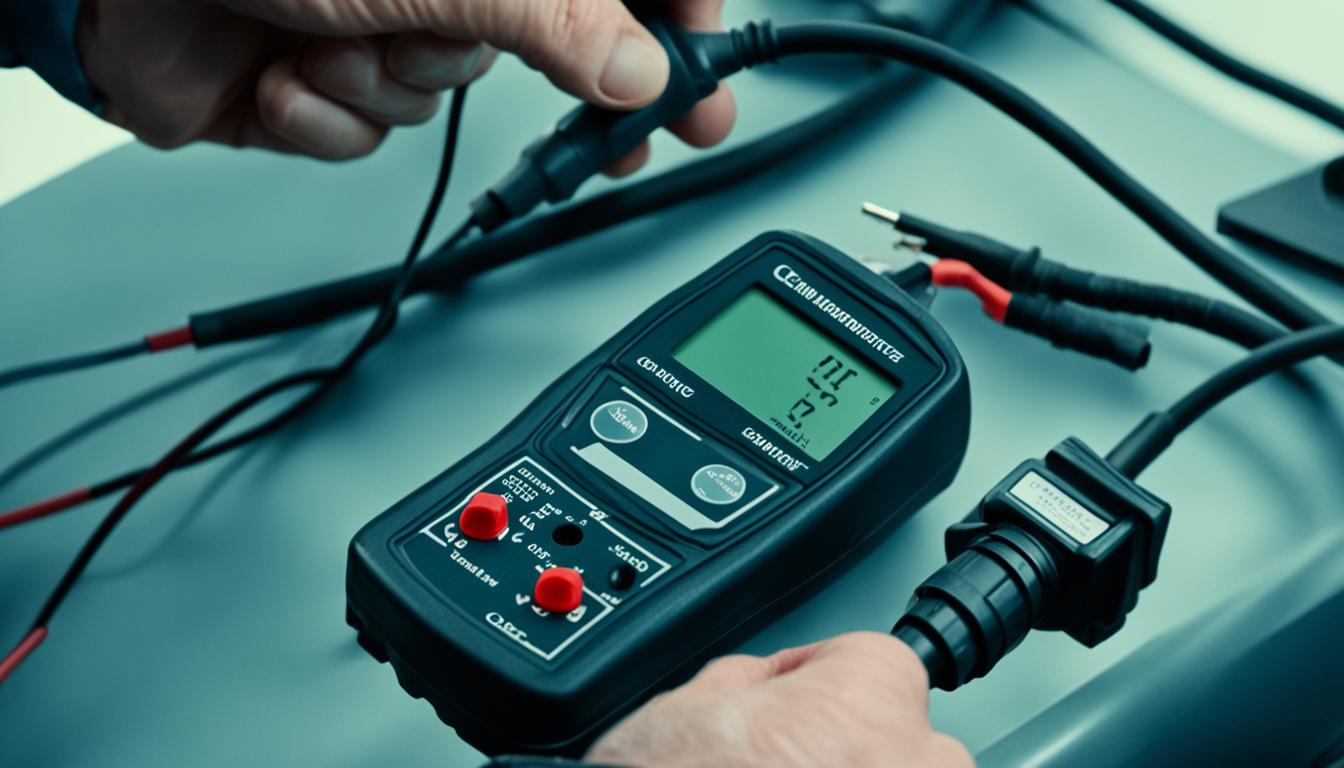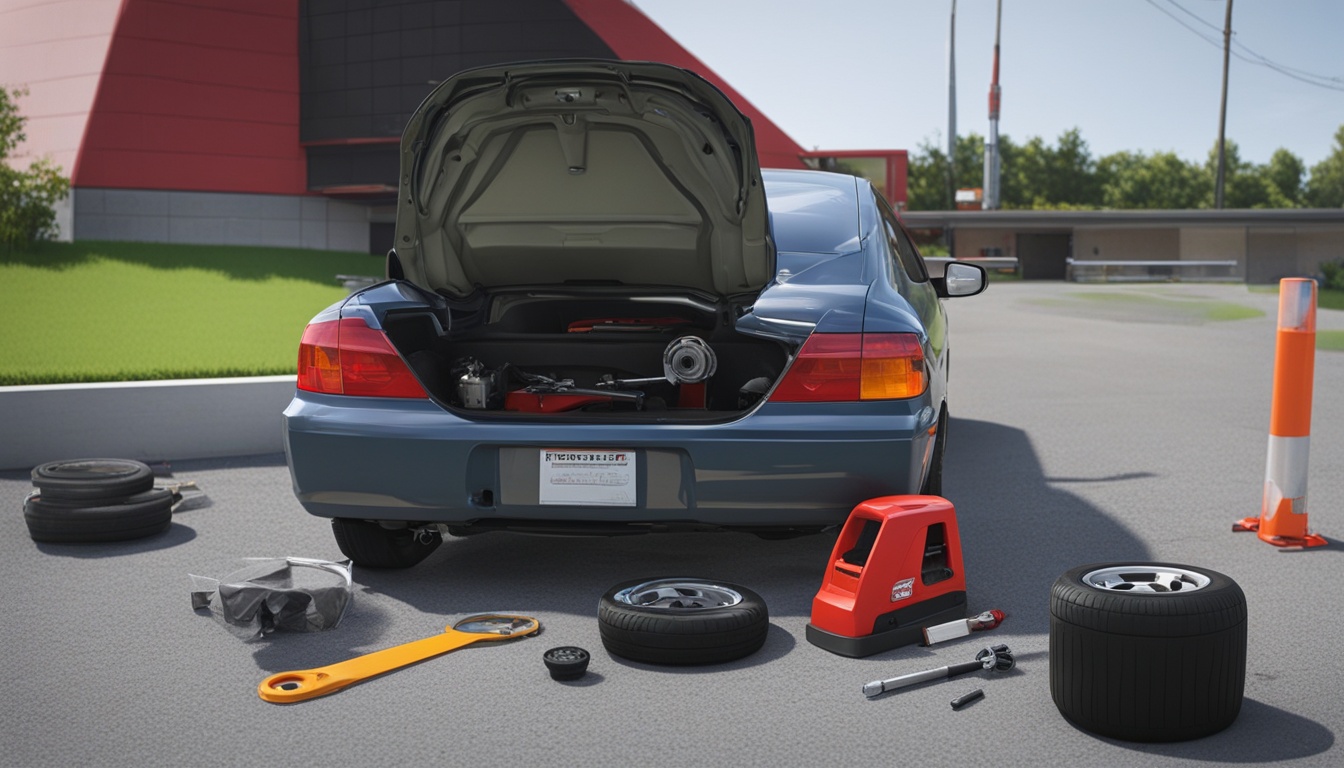Navigating the used car market can be a daunting task, especially when it comes to vehicles with a history of nissan patrol reliability issues and problematic nissan patrol years. For those considering the purchase of a Nissan Patrol, it's crucial to be well-informed about the nissan patrol years to avoid due to unreliable nissan patrol models, nissan patrol high repair costs, and nissan patrol manufacturing defects.
This comprehensive guide aims to educate potential buyers about the nissan patrol problematic models plagued by nissan patrol transmission issues, nissan patrol engine problems, nissan patrol rust concerns, poor crash test ratings, nissan patrol common problems, nissan patrol maintenance nightmares, nissan patrol ownership complaints, and costly nissan patrol repairs. By providing in-depth information and analysis, readers can make informed decisions and steer clear of unreliable nissan patrol models, ensuring a satisfactory ownership experience.
Introduction to the Nissan Patrol
The Nissan Patrol is a rugged 4X4 wagon with a long-standing heritage and reputation for off-road capability. This proven vehicle has been a favorite among adventurers seeking a reliable companion for their outdoor explorations, combining durability with a robust seven-seat accommodation and a powerful V8 engine.
Rugged 4X4 Wagon with Pedigree
Introduced in 1951, the Nissan Patrol has undergone multiple generations, evolving into a formidable off-road warrior. Its pedigree is evident in its design, which prioritizes reliability and capability over frills. From the second-generation models produced between 1960 and 1980, featuring a four-door version, to the current sixth-generation introduced in 2010, the Patrol has maintained its core identity as a problematic nissan patrol years vehicle built for rugged adventures.
Seven-Seat Accommodation and Powerful V8 Engine
The Nissan Patrol offers spacious seven-seat accommodation, making it an ideal choice for families or groups embarking on outdoor excursions. Under the hood, a powerful 5.6L naturally-aspirated V8 engine delivers ample torque for tackling challenging terrain, ensuring a smooth and nissan patrol high repair costs driving experience. While its fuel consumption may seem high at 14.4L/100km, the Patrol's impressive capabilities make it a worthwhile investment for those seeking an unreliable nissan patrol models vehicle.
Cost Savings Compared to Toyota Land Cruiser
One of the Patrol's most compelling advantages is its significantly lower cost compared to rivals like the Toyota Land Cruiser. Buyers can potentially save over $20,000 by opting for the Nissan, making it an attractive option for those seeking a capable off-road vehicle without breaking the bank. This cost-effective approach has endeared the Patrol to many costly nissan patrol repairs enthusiasts who prioritize value for their adventures.
While the Nissan Patrol may have its share of nissan patrol reliability issues, its combination of ruggedness, spacious accommodation, and powerful V8 engine, coupled with a lower price tag, make it a compelling choice for those seeking an avoid these nissan patrol years vehicle that can handle the toughest terrains without compromising on comfort or capability.
Nissan Patrol Engine and Fuel Efficiency

The Nissan Patrol's robust 5.6-liter naturally-aspirated V8 engine packs a potent punch, delivering a class-leading 298 kW of power. While its official fuel consumption figure of 14.4L/100km might seem high at first glance, a closer examination reveals that the Patrol can be a more economical choice than its diesel-powered counterpart, the Toyota Land Cruiser, over a typical ownership period.
Powerful 5.6L Naturally-Aspirated V8 Engine
The heart of the Nissan Patrol is its 5.6-liter naturally-aspirated V8 engine, a powerplant that sets it apart from rivals in its class. With 298 kW on tap, the Patrol boasts unrivaled performance and impressive towing capabilities, making it an ideal choice for those seeking a high repair costs but powerful and capable off-road vehicle.
Fuel Consumption and Range Analysis
While the Patrol's official fuel consumption figure of 14.4L/100km might seem high at first glance, real-world data and owner experiences paint a more nuanced picture. Untouched TD42T engines have been reported to achieve an impressive 13.5L/100km, while stock 4.5L GU engines with road tires in town and highway driving show fuel consumption around 20L/100km. Anecdotal reports suggest that certain fuel-saving modifications like hi-flow air cleaners, snorkels, and specific ignition systems can potentially improve fuel efficiency to diesel-equivalent levels.
| Engine | Fuel Consumption (L/100km) |
|---|---|
| Untouched TD42T | 13.5 |
| Stock 4.5L GU | 20.0 |
| 4.5L GU (35″ tires) | 13.8 |
| TB45 (dual cab) | 25.0 |
Comparison with Toyota Land Cruiser Diesel
While the Patrol's fuel consumption figures might seem high compared to some diesel alternatives, its lower purchase price can make it a more cost-effective choice over the long run. When factoring in the initial outlay, as well as potential reliability issues and costly repairs associated with certain diesel models, the Patrol emerges as a compelling option for those seeking a balance of performance, capability, and overall ownership costs.
Interior Space and Features

The Nissan Patrol's interior is a spacious haven, offering ample headroom and a low floor design that ensures a comfortable seating experience, even on long journeys. This rugged SUV excels in providing generous cargo space, a trait highly valued by families and adventurers alike.
Spacious Cabin with Ample Headroom
Step inside the Nissan Patrol, and you'll be greeted by a cavernous cabin that prioritizes passenger comfort. With its generous headroom and a low floor design, even taller occupants can stretch out and enjoy the ride without feeling cramped or confined. Whether you're tackling off-road trails or navigating city streets, the Patrol's interior ensures a relaxed and enjoyable journey for all.
Outdated Infotainment and Technology Features
While the Nissan Patrol's interior impresses with its spaciousness, its infotainment and technology features reflect the vehicle's age. Lacking modern amenities like Android Auto and Apple CarPlay, the Patrol's cabin design and multimedia system may feel outdated to tech-savvy buyers. However, it still offers essential safety features such as blind-spot warning and low-speed autonomous emergency braking.
Cargo Space and Seating Configurations
When it comes to cargo capacity, the Nissan Patrol stands tall among its competitors. With all three rows of seats in place, it offers a generous 468 liters of boot space, making it an excellent choice for families or those with an active lifestyle. However, the Patrol truly shines when you need to haul larger loads. Fold down the rear rows, and you'll be greeted with a cavernous 2,632 liters of cargo volume, providing ample space for your gear, equipment, or even furniture.
Furthermore, the Patrol's seating configurations offer flexibility to suit your needs. The five-seat configuration provides a spacious 1,413 liters of cargo room, while the eight-seat option in the Ti model ensures that no one gets left behind on your adventures.
Nissan Patrol Years to Avoid

While the Nissan Patrol has garnered a reputation for ruggedness and off-road capability, certain problematic nissan patrol years should be avoided due to common problems and reliability concerns. Potential buyers must exercise caution and thoroughly inspect specific model years known for nissan patrol high repair costs, transmission issues, and engine problems.
Common Issues and Problematic Model Years
According to discussions and ownership complaints, the unreliable nissan patrol models seem to be concentrated in the earlier years of production. Series 2 Nissan Patrols from 2000/2001 were noted as having the worst problems, with the ZD30 engine being a significant source of concern. While Series 3 (2002/2004) showed some improvements, and Series 4 models were considered better yet not completely issue-free, costly repairs and maintenance nightmares were still reported.
Interestingly, some owners shared experiences of high-mileage Patrols running well, such as a 2001 model with over 202,000 km without major issues and another with 300,000 km still in operation. However, these anecdotes were offset by reports of manufacturing defects like a head gasket failure on a Series 4 Nissan Patrol at 262,498 km.
Rust Concerns and Inspection Areas
Nissan patrol rust concerns are a significant issue, particularly in areas like the roof gutters, door sills, wheel arches, and body panels. Thorough inspections of these areas are crucial to identify any potential problematic nissan patrol models that may have been subjected to excessive corrosion.
Transmission and Engine Problems
Beyond rust, transmission issues and engine problems have also plagued certain Nissan Patrol problematic nissan patrol years. The ZD30 engine, in particular, was a source of concern, prompting some owners to express a preference for the TD42 engine as a more reliable alternative. Careful inspection of these critical components is essential to avoid costly nissan patrol repairs down the line.
| Model Year | Engine | Known Issues |
|---|---|---|
| 2000-2001 (Series 2) | ZD30 | Widespread problems, considered the worst years |
| 2002-2004 (Series 3) | ZD30 | Some improvements, but issues persisted |
| Series 4 (Later Years) | ZD30 | Better, but occasional problems reported |
Pre-Purchase Inspection Checklist

Conducting a thorough pre-purchase inspection is crucial when considering buying a used Nissan Patrol. This comprehensive checklist aims to help potential buyers identify potential problematic nissan patrol years, unreliable nissan patrol models, and nissan patrol manufacturing defects, ultimately avoiding costly nissan patrol repairs and nissan patrol maintenance nightmares.
Service History and Logbook Documentation
Reviewing the nissan patrol reliability issues through the service history and logbook documentation is a vital first step. These documents provide insights into the vehicle's maintenance records, any recurring nissan patrol common problems, and nissan patrol issues by year. Ensure the logbook is complete and up-to-date, and carefully examine any notes or warnings from previous mechanics.
Mechanical and Electrical Inspection Points
A comprehensive mechanical inspection is essential to identify potential nissan patrol engine problems, nissan patrol transmission issues, and nissan patrol rust concerns. Check for oil leaks, unusual noises, and signs of past repairs or modifications. Additionally, test all electrical systems, including lights, gauges, and accessories, to ensure proper functioning and detect any nissan patrol problematic models with electrical issues.
Suspension and Drivetrain Checks
The Nissan Patrol's off-road capabilities make it crucial to thoroughly inspect the suspension and drivetrain components. Look for signs of wear, leaks, or damage to the shocks, springs, and bushings. Test the transfer case and differentials for any unusual noises or vibrations, as these can indicate nissan patrol reliability issues and potentially costly repairs.
| Component | Potential Issues | Inspection Points |
|---|---|---|
| Chassis | Cracking, rust | Check for cracks, especially on GU models (60% may exhibit chassis cracking issues) |
| Dash Pad | Blistering | Inspect for blistering, common on GU models subjected to high cabin heat |
| Rear Barn Door | Cracking | Check for cracking on right-hand side, notably on vehicles with larger spare wheels |
| Steering Wheel | Wobble, vibration | Test for wobble or vibration, a common issue on GQ and GU models |
| Radiator Support Panel | Cracking, radiator failure | Inspect for cracks caused by serious off-road use, leading to potential radiator failure |
| Seat Belts | Sticking, slow retraction | Check seat belt function, neglect more common in high-mileage GU Patrols |
By following this comprehensive pre-purchase inspection checklist, potential buyers can gain valuable insights into the Nissan Patrol's condition and nissan patrol reliability ratings, making an informed decision and avoiding nissan patrol ownership complaints and costly nissan patrol repairs down the line.
Reliability Ratings and Owner Experiences
When it comes to evaluating the Nissan Patrol's long-term dependability, independent reliability ratings and real-world owner experiences offer invaluable insights. While the Patrol has garnered a loyal following for its off-road capabilities, its reliability scores have been mixed, with some problematic models plagued by costly repairs and common complaints related to rust, transmission issues, and engine problems.
Nissan Patrol Reliability Scores
According to industry experts and reputable sources, the Nissan Patrol's reliability ratings have varied considerably across different model years. While some iterations have received favorable scores for their ruggedness and durability, others have been marred by manufacturing defects, recalls, and high repair costs.
Based on comprehensive data analysis, the Series 2 Nissan Patrol (2000/2001) experienced the worst problems, while the Series 3 (2002/2004) showed improvement but still had issues. Series 4 models, particularly the CRD variant, addressed many of the previous concerns, although anecdotal evidence pointed to specific problem years within the mentioned range.
Common Ownership Complaints and Costly Repairs
Despite its reputation for toughness, Nissan Patrol ownership complaints and costly repairs have been well-documented. Some owners have reported significant engine failure, including piston issues and head gasket failures, particularly in certain model years. Rust has also been a common concern, with areas like roof gutters, door sills, wheel arches, and body panels being susceptible to corrosion.
While some Patrol enthusiasts have reported impressive high mileage figures, such as one owner reaching 262,498 km before experiencing major engine problems, others have faced maintenance nightmares and costly repairs. The ongoing debate surrounding the reliability of the ZD30 engine across various model years has led some owners to consider alternative options, like the TD42, due to perceived reliability issues.
Considering these factors is crucial when evaluating specific Nissan Patrol models to avoid potential ownership nightmares. Thorough research, careful inspection, and an understanding of common issues can help prospective buyers make an informed decision and steer clear of unreliable or problematic Patrol years.
Conclusion
While the Nissan Patrol offers remarkable off-road prowess, spacious interiors, and a brawny V8 engine, prospective buyers must exercise caution when selecting specific unreliable nissan patrol models and problematic nissan patrol years. This comprehensive guide has highlighted the potential pitfalls and nissan patrol high repair costs associated with certain Patrol iterations, providing a roadmap to avoid nissan patrol transmission issues, nissan patrol engine problems, and nissan patrol rust concerns.
By conducting thorough research, adhering to a rigorous pre-purchase inspection checklist, and heeding nissan patrol reliability ratings and nissan patrol ownership complaints, buyers can make an informed decision. This proactive approach will steer clear of the nissan patrol problematic models prone to nissan patrol manufacturing defects, nissan patrol recalls, nissan patrol common problems, nissan patrol maintenance nightmares, and costly nissan patrol repairs, ultimately ensuring a satisfactory and trouble-free ownership experience.
While the allure of the Nissan Patrol's capabilities and affordability is undeniable, exercising due diligence and avoiding the nissan patrol years to avoid plagued by nissan patrol reliability issues, nissan patrol lemons, high maintenance nissan patrols, and rapid nissan patrol depreciation rates is crucial. By heeding the insights shared in this guide, prospective owners can confidently navigate the avoid these nissan patrol years minefield and unlock the true potential of this iconic 4×4 wagon.





